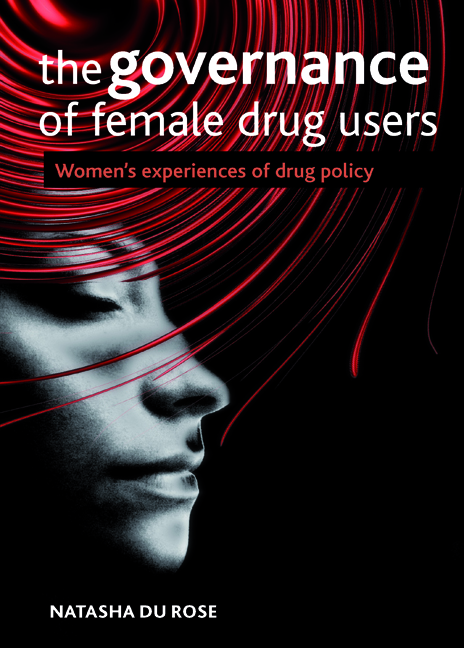one - Research context
Published online by Cambridge University Press: 10 March 2022
Summary
This chapter discusses the research context in which this book is located, including the traditional inclination to view women's drug use as peripheral or pathological. It examines feminist work on female drug use and how this has challenged traditional understandings of female users. It concludes with a discussion of the contribution this book will make. This chapter investigates the various ways female illicit drug use has been made sense of and the different ways female users have been constructed within academic discourse. It explores how different explanations of women's illicit drug use have shaped the meaning of it in different ways and how the subject position of a female illicit drug user is continuously being modified and transformed as new and different explanations emerge in the chain of knowledge about it.
Traditionally, research on illicit drug use focused on male users, and women were ignored or seen as peripheral to predominantly male worlds of drug usage (File, 1976; Marsh, 1982; Jeffries, 1983; Gomberg, 1986). When the issue of female illicit drug use was focused on, the bulk of the research was concerned with women’s deviation from traditional gender roles, pregnancy and motherhood (Rosenbaum, 1997). Early studies that did include women were predominantly medical, psychiatric and psychological, and based on women in treatment (Rosenbaum, 1981). Women were considered as a subset of a larger male population or compared with male users (Taylor, 1993). Within this literature female users were constructed as more deviant, ‘sicker’, passive and emotionally and psychologically disordered than male users and ‘normal’ women (Rosenbaum, 1981 1997; Taylor, 1993). By the 1970s a growing body of research, mostly from the US, began to appear on the physiological effects of women’s illicit drug use on the foetus and newborn, and the ‘management’ of the pregnant user.
Baby vessels and bad mothers
The effect of women's illicit drug use on reproduction and childrearing largely dominated academic discourse on female illicit drug use in the 1960s and 1970s, and still continues to thrive, emerging from the clinical fields of obstetrics (see, for example, Naeye et al, 1973, 1976; Fraser, 1976; Kandall et al, 1976; Wilson et al, 1979; Lutiger et al, 1991; Mathias, 1992; Hepburn, 1993) and psychiatry and psychology (see, for example, Densen-Gerber et al, 1972; Carr et al, 1975; Pagliaro and Pagliaro, 1999).
- Type
- Chapter
- Information
- The Governance of Female Drug UsersWomen's Experiences of Drug Policy, pp. 17 - 42Publisher: Bristol University PressPrint publication year: 2015



